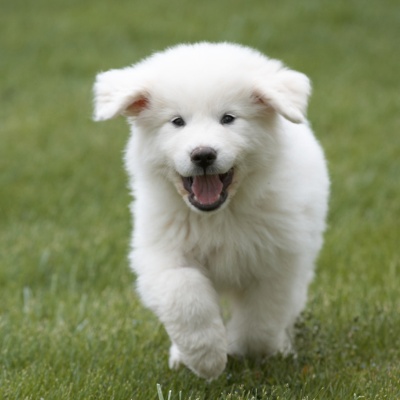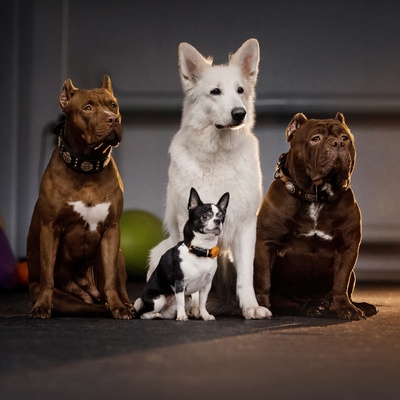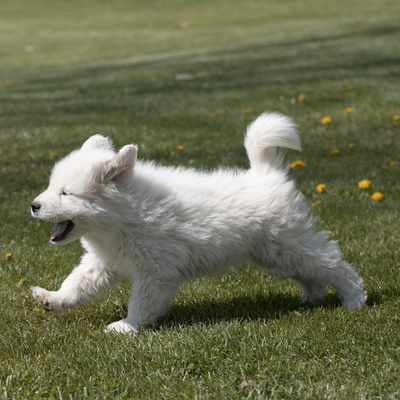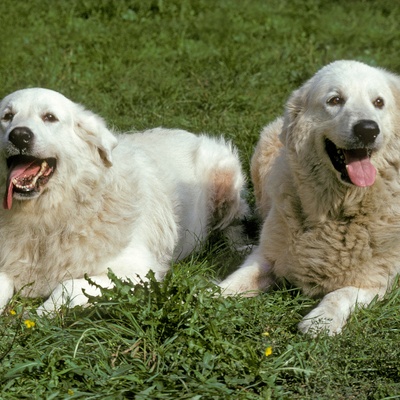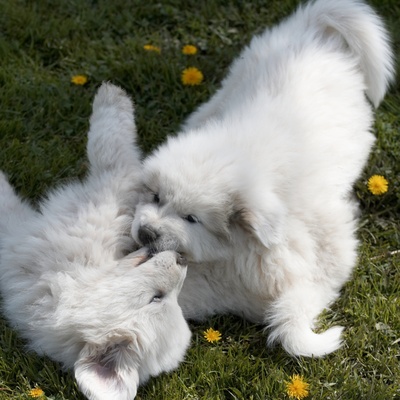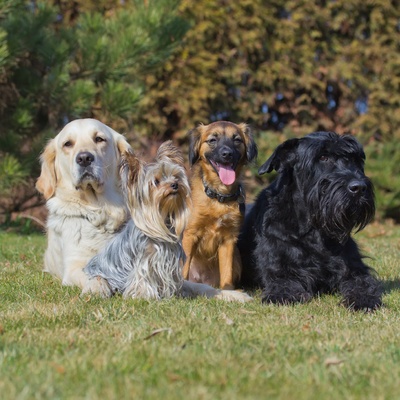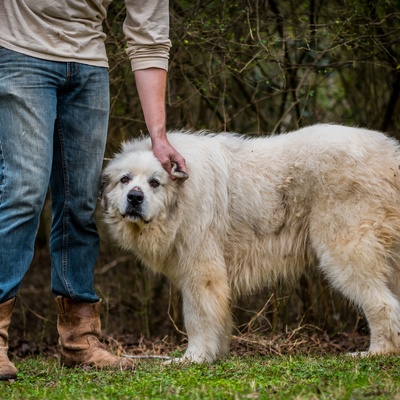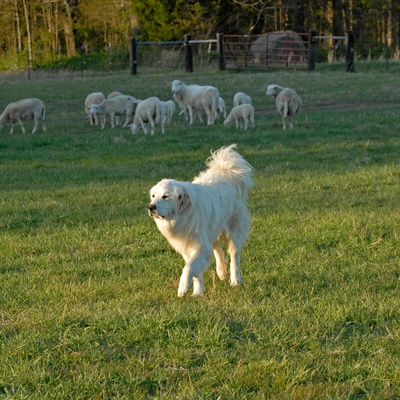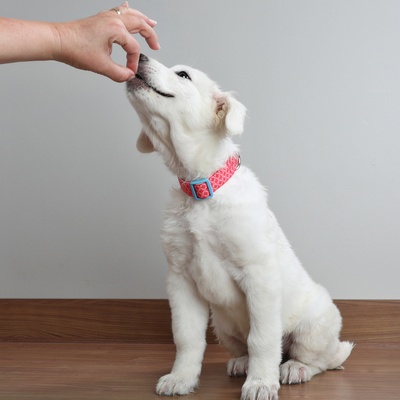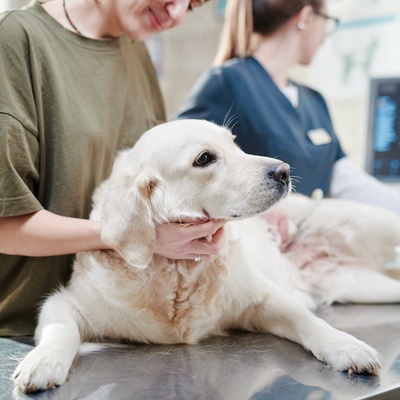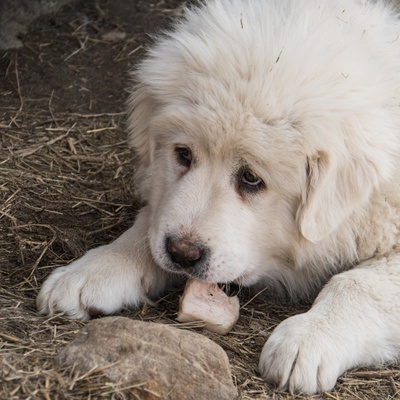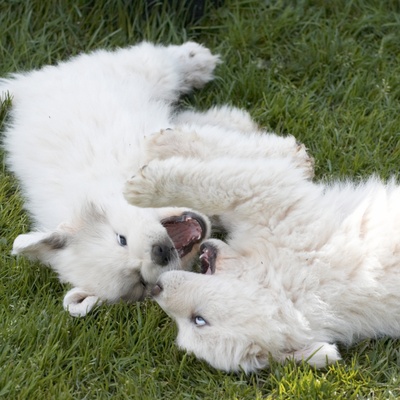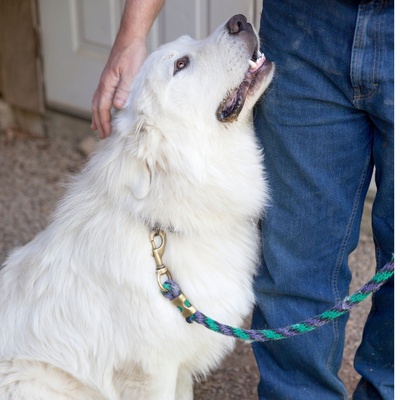Introducing the Great Pyrenees
Discover all there is to know about the Great Pyrenees : its characteristics, behavior, training, and its cost.
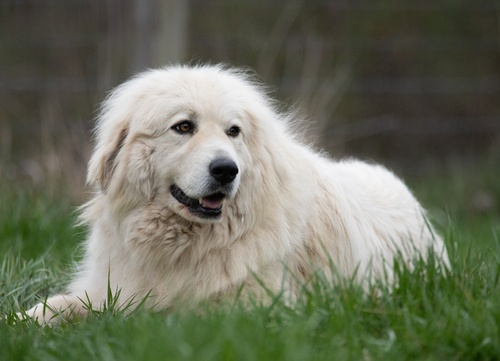
Discover all there is to know about the Great Pyrenees : its characteristics, behavior, training, and its cost.
The Great Pyrenees has a noble lineage that dates back centuries, originally bred to guard flocks in the harsh Pyrenees mountains between France and Spain. This breed is celebrated for its majestic presence, becoming one of the most revered and beloved breeds across the globe. Renowned for their courage and protective instincts, the Great Pyrenees excels not only in their traditional role of livestock guardian but also as a loyal companion, therapy dog, and participant in search and rescue operations.
Their defining qualities include a calm demeanor, intelligence, and a profound sense of loyalty. Despite their size, they are known for being gentle, affectionate, and possessing an innate kindness that endears them to all. Their sociability extends to both humans and other animals alike, often showing a sweet, nurturing side to their family and those they consider part of their flock.
This section outlines the unique features of the Great Pyrenees breed.
The Great Pyrenees falls under the working group (2), which includes breeds known for their ability to perform a variety of tasks, from guarding to pulling sleds.
The Great Pyrenees is a large dog, typically reaching 25 to 32 inches at the shoulder and weighing between 85 to 160 pounds, showcasing their stature as gentle giants.
This breed boasts a long, thick double coat that provides insulation against cold weather. The outer coat is coarse and long, while the undercoat is fine and dense.
Predominantly white, the coat of the Great Pyrenees may also feature shades of gray, red (tan), or brown.
The Great Pyrenees adapts well to various living environments but thrives in homes with access to open spaces.
Known for being affectionate and gentle, the Great Pyrenees is friendly and sociable, making them excellent companions for children and good with other animals.
Generally healthy, the Great Pyrenees can be prone to certain conditions like hip dysplasia and bloat. Regular check-ups and a healthy lifestyle can help mitigate these risks.
The Great Pyrenees is intelligent and independent, traits that can make training a challenge. They respond best to training that is consistent, patient, and positive.
We can help!
Every dog has its own character, and so do you. Making the right choice will ensure his well-being and yours.
Take our quiz to find out which breed is right for you, based on your personality, lifestyle, location and many other criteria.
Don't wait any longer and take the quiz to find out the answer!
The Great Pyrenees is a majestic breed, known for its large, powerful frame and striking white coat that can also feature markings of gray, tan, or brown. With a noble, bear-like face and dark, soulful eyes framed by a mane of fluffy fur, this breed exudes a serene and protective presence.
The Great Pyrenees is amongst the larger dog breeds, with females typically standing between 25 and 29 inches and males reaching up to 32 inches in height. Weight-wise, females usually fall in the range of 85 to 115 pounds, while males can weigh between 100 and 160 pounds.
The growth of the Great Pyrenees puppies is rapid, with significant milestones in size and weight occurring within the first year. By the age of 18 months, most Great Pyrenees will have reached their full size and weight, embodying their status as gentle giants.
The Great Pyrenees possesses a magnificent double coat that is both long and weather-resistant, providing excellent protection against harsh climates. The outer coat is coarse and long, featuring elegant waves and fringes, particularly around the neck, tail, and legs, contributing to its regal appearance. This breed's undercoat is dense and soft, serving as insulation during cold temperatures.
The coat color of the Great Pyrenees is predominantly white, which can include markings of gray, tan, or brown. These markings are usually found on the ears, tail, and sometimes the body, giving each dog a unique appearance while maintaining the characteristic white base.
The luxurious coat of the Great Pyrenees requires regular maintenance to keep it in good condition. Due to their thick undercoat, these dogs shed throughout the year, with shedding intensifying during the spring and fall as they prepare for the changing seasons. Regular brushing, at least once a week, is essential to remove loose fur, prevent matting, and distribute natural oils throughout the coat.
During peak shedding periods, more frequent grooming may be necessary to manage the increased hair loss. While the Great Pyrenees has a coat that can handle a lot of natural dirt and debris, bathing should be done sparingly, every few months, to avoid stripping the natural oils from the skin and coat. It's important to use a gentle dog-specific shampoo to maintain their coat's health and shine.
The Great Pyrenees is a model of grace and power, epitomizing balance and well-proportioned beauty. The breed's head is notable for its wedge shape, blending majesty with a gentle expression. Their eyes, medium in size and almond-shaped, exude a soulful and intelligent gaze, typically dark brown, conveying a calm and wise demeanor. The ears, small to medium in size and V-shaped, are set at eye level and lie flat against the head, complementing their serene expression.
The body of the Great Pyrenees is strong and muscular, displaying a solid bone structure with a broad chest and a level back, culminating in a well-plumed tail that may be carried low or over the back in a "shepherd's crook" when alert. This physical composition, combined with their imposing size, makes them both an imposing guardian and a gentle companion.
The Great Pyrenees is renowned for its calm demeanor, loyalty, and protective nature, making it an excellent guardian as well as a devoted and affectionate family member.
With over 400 recognized dog breeds categorized into 10 distinct groups, the classification system is designed to organize breeds based on their functions and characteristics. The Great Pyrenees belongs to the working group (2), which encompasses breeds known for their roles in guarding, pulling, and rescue, among other tasks. This group includes a variety of breeds, such as the Saint Bernard, Mastiff, and Alaskan Malamute, known for their strength, intelligence, and versatility.
The Great Pyrenees, with its natural guardian instincts, exceptional intelligence, and gentle temperament, stands out within this group. Primarily bred for protecting livestock from predators in harsh mountain environments, the breed has evolved into a loyal companion that excels in providing comfort, security, and affection to its human family.
The Great Pyrenees embodies a serene and vigilant demeanor, often displaying a calm and contemplative nature. These dogs are profoundly affectionate, forming strong, protective bonds with their families. They possess a deep sense of loyalty, and their displays of affection are genuine and heartwarming, often seeking close physical proximity to their loved ones.
The presence of a caring and attentive owner is crucial for the Great Pyrenees, as they thrive on companionship and require consistent guidance and reassurance to develop into well-adjusted adults. Their independent streak is balanced by a desire to please those they consider part of their flock.
Known for their kind and generous nature, the Great Pyrenees is exceptionally sociable, extending a warm welcome to humans and animals alike. This breed demonstrates a remarkable patience and gentleness, making them excellent companions for children, with whom they share a protective yet playful bond.
The Great Pyrenees's sociability is a testament to their inclusive spirit, embracing family, friends, and even strangers with equanimity. Early socialization is imperative to cultivate their natural sociability, ensuring they grow into well-rounded and confident dogs, capable of navigating various social situations with ease and grace.
Take the test and find out the dog breed that matches your personality and lifestyle.
The Great Pyrenees can adapt to a variety of living situations, from spacious homes in the countryside to more confined urban dwellings like apartments, provided they have ample opportunity to exercise and explore. Regular, lengthy walks are essential for their physical and mental health, with a minimum of one hour of walking per day recommended to satisfy their need for activity and exploration.
While the Great Pyrenees shows remarkable adaptability to different living environments, they truly thrive in settings where they can roam and play in a secure outdoor space. This breed possesses a natural inclination to patrol and guard their territory, a trait that is best accommodated in larger, enclosed areas where they can express this behavior without restriction. Access to outdoor spaces not only caters to their physical exercise needs but also to their curious and vigilant nature, allowing them to fulfill their role as a guardian and companion.
While the Great Pyrenees shows remarkable adaptability to different living environments, they truly thrive in settings where they can roam and play in a secure outdoor space. This breed possesses a natural inclination to patrol and guard their territory, a trait that is best accommodated in larger, enclosed areas where they can express this behavior without restriction. Access to outdoor spaces not only caters to their physical exercise needs but also to their curious and vigilant nature, allowing them to fulfill their role as a guardian and companion.
The Great Pyrenees possesses a blend of superior intelligence and an independent spirit, which can make training both a rewarding and challenging experience. Their capacity for understanding and executing commands is matched by a thoughtful contemplation of each command's purpose. Training should thus be approached with patience, employing positive reinforcement and consistency.
The breed's protective instincts can be honed for tasks such as guarding and companionship with the right training approach. Equipping the Great Pyrenees with a GPS collar is a prudent measure to ensure their safety, given their propensity to roam and exercise their guardian instincts beyond familiar boundaries.
Despite their size, the Great Pyrenees is known for their listening skills, responding well to commands when engaged in a respectful and understanding manner. Their training regimen should acknowledge their need for mental stimulation and the use of their natural guarding abilities in a constructive way.
Unique training characteristics include the need for early socialization to foster a well-rounded temperament and the importance of establishing a leadership role that the dog can respect and trust. This breed thrives under a training methodology that emphasizes mutual respect and understanding, paving the way for a loyal and obedient companion.
The Great Pyrenees is known for its generally robust health, thanks to its origins as a hardworking mountain breed. However, daily care and preventive measures are essential to maintain this breed's health, focusing on a proactive approach to avoid common health issues and infections.
Generally, the Great Pyrenees enjoys good overall health, demonstrating resilience and a sturdy constitution. Despite this, the breed has predispositions to certain health problems, such as hip dysplasia, bloat (gastric torsion), and bone cancer. These conditions may manifest with symptoms like limping, lethargy, or acute distress.
Regular health screenings and being attentive to the early signs of these issues can significantly impact their management. The typical lifespan of a Great Pyrenees ranges from 10 to 12 years, reflecting their status as large breed dogs.
Ensuring the Great Pyrenees lives a long, healthy life involves regular veterinary visits for vaccinations, parasite control, and health check-ups. Daily care routines are crucial, including thorough brushing at least once a week to manage their thick coat, regular ear cleaning to prevent infections, dental care to avoid tartar build-up, and nail trimming to maintain paw health.
While the Great Pyrenees is not considered hypoallergenic, understanding potential allergies and consulting with a veterinarian can help manage any sensitivities. This comprehensive approach to health and nutrition is vital in supporting the well-being of the Great Pyrenees throughout their life.
The nutritional needs of the Great Pyrenees are distinct and require a balanced diet to maintain their health, energy, and strength. Given their size and typically calm but protective nature, it's crucial that their diet is rich in proteins and vitamins to support muscle maintenance and overall vitality. Premium kibble designed for large breeds is recommended to provide a comprehensive dietary foundation, ensuring that all nutritional requirements are met.
For Great Pyrenees with higher activity levels or additional protein needs, supplementing their diet with lean cuts of white and red meat can be beneficial, though it's essential to keep fat intake minimal. Careful management of their diet is necessary to prevent overfeeding, as this breed can be prone to obesity, which would exacerbate joint issues common in large dogs.
The Great Pyrenees is beloved for its gentle and protective nature. Before adopting, consider its needs and the commitment required.
Before adopting a Great Pyrenees, it's crucial to make an informed decision. Selecting a reputable breeder is paramount, and a visit to their premises is essential to observe the dogs' living conditions and demeanor. The health of the puppy and its parents should be transparent, with breeders providing clear information about any hereditary conditions.
Lastly, mandatory electronic identification, like microchipping, is not always mandated at the federal level in the United States for cats and dogs. But microchipping is widely acknowledged as a successful way to permanently identify pets and increase the possibility of reuniting lost pets with their owners, even in the absence of universal regulations. As a pet owner, it is advised to inform yourself about municipal laws to ensure the safety and wellbeing of your pet.
The cost of a Great Pyrenees puppy can vary significantly, influenced by factors such as the breeder's reputation, the dog's lineage, and pedigree. Prices for a Great Pyrenees puppy range from
to
. However, the initial purchase cost is just the beginning, as maintaining a Great Pyrenees involves ongoing expenses for food, veterinary care, and grooming.
The annual cost of caring for a Great Pyrenees can average between
and
, depending on health, diet, and other needs.
Choosing a dog that matches your personality and lifestyle will ensure your well-being and his!
